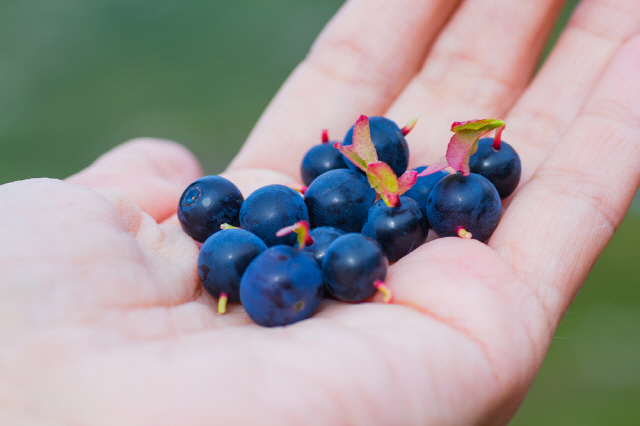
The Rural Development Administration conducted a meta-analysis on the nutritional benefits of anthocyanins.
Anthocyanins are purple or black pigments found in fruits and vegetables, with antioxidant properties and effects such as improving blood lipid levels.
The research team compiled the results of studies related to anthocyanin intake to verify its health benefits. Out of 336 domestic and international clinical studies on anthocyanin reported up to June 2023, 41 studies confirmed lipid improvement effects. Among these, the most common studies involved bilberry and blackcurrant, followed by blueberry, cranberry, and elderberry.
Analysis results showed that consuming an average of about 240mg of anthocyanins per day reduced blood triglyceride levels and LDL cholesterol, which are associated with the development of cardiovascular diseases.
The Rural Development Administration expects to use these research results to estimate the appropriate intake of domestically produced agricultural products containing anthocyanins. For example, the average anthocyanin content in 100g of Korean blackberries is 420mg. Therefore, consuming 60g of blackberries can meet the daily requirement of 240mg of anthocyanins.
Kim Jin-sook, head of the Functional Foods Division at the Rural Development Administration, said, "We will do our best to expand the database and services linking the efficacy and components of domestic agricultural products to help increase income for related industries and farmers."
Meanwhile, the results of this study were recently published in 'Frontier in Nutrition'.
Anthocyanins are purple or black pigments found in fruits and vegetables, with antioxidant properties and effects such as improving blood lipid levels.
The research team compiled the results of studies related to anthocyanin intake to verify its health benefits. Out of 336 domestic and international clinical studies on anthocyanin reported up to June 2023, 41 studies confirmed lipid improvement effects. Among these, the most common studies involved bilberry and blackcurrant, followed by blueberry, cranberry, and elderberry.
Analysis results showed that consuming an average of about 240mg of anthocyanins per day reduced blood triglyceride levels and LDL cholesterol, which are associated with the development of cardiovascular diseases.
The Rural Development Administration expects to use these research results to estimate the appropriate intake of domestically produced agricultural products containing anthocyanins. For example, the average anthocyanin content in 100g of Korean blackberries is 420mg. Therefore, consuming 60g of blackberries can meet the daily requirement of 240mg of anthocyanins.
Kim Jin-sook, head of the Functional Foods Division at the Rural Development Administration, said, "We will do our best to expand the database and services linking the efficacy and components of domestic agricultural products to help increase income for related industries and farmers."
Meanwhile, the results of this study were recently published in 'Frontier in Nutrition'.